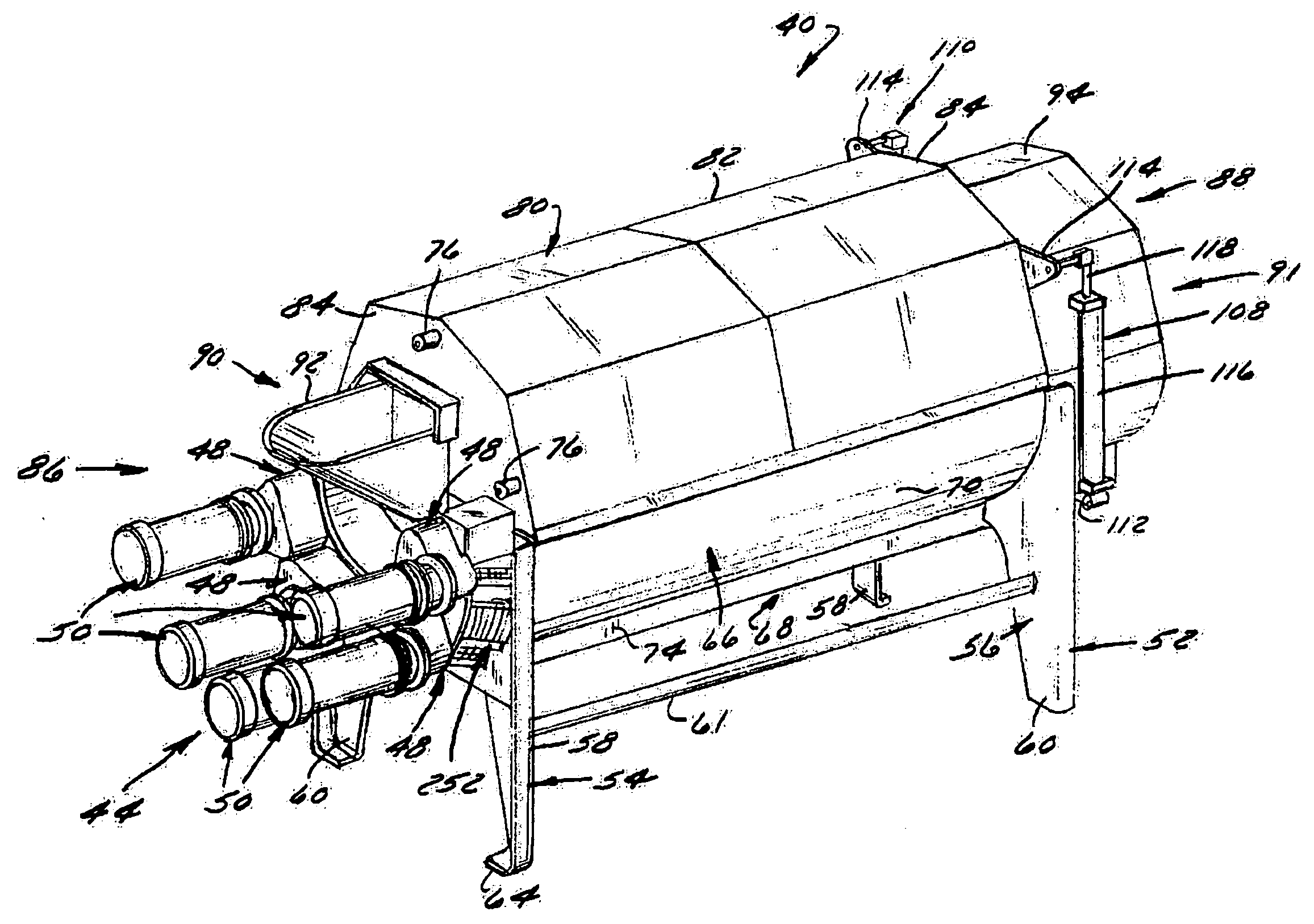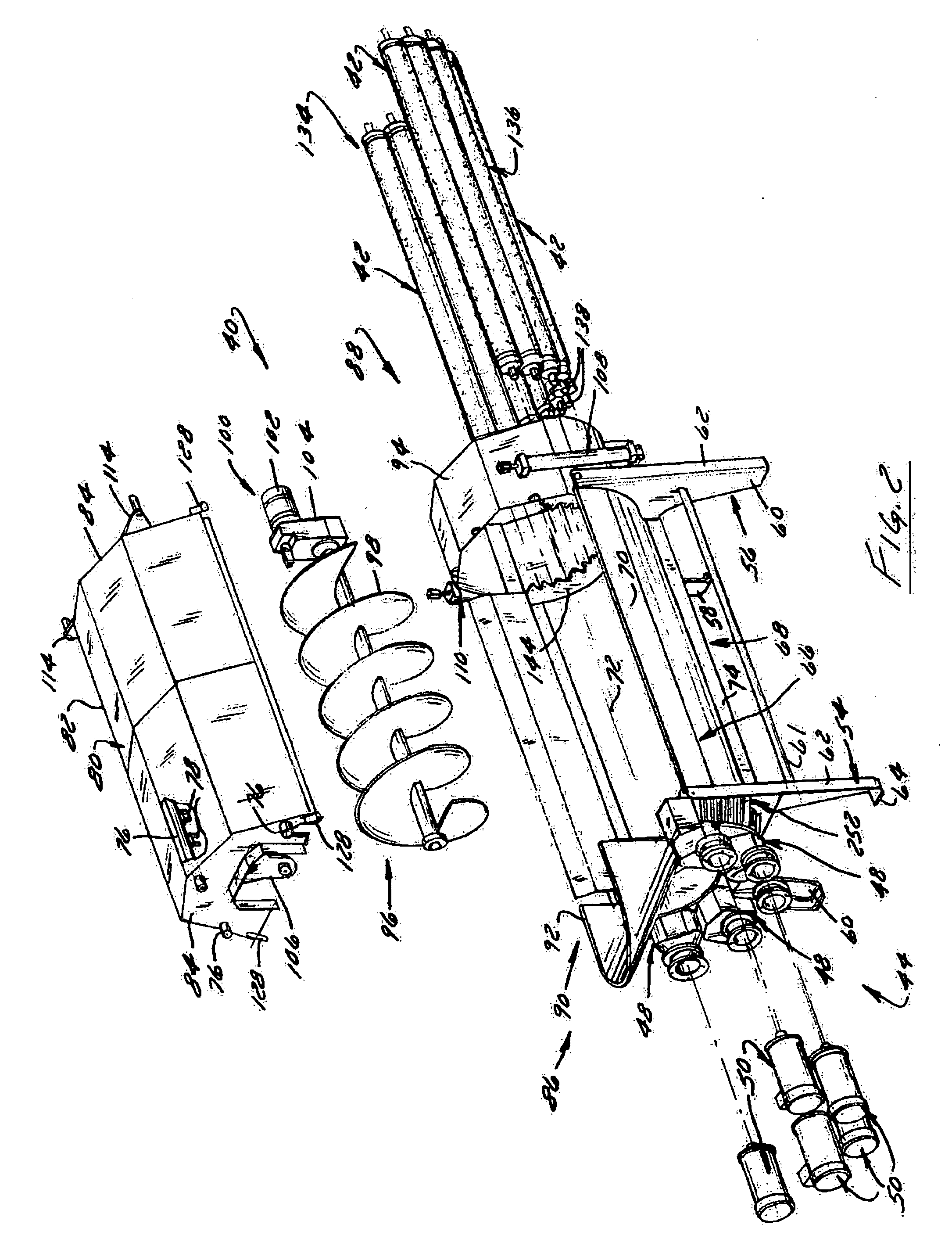High speed food product peeling or cleaning machine and method
a cleaning machine and high-speed technology, applied in the field of processing food products, can solve the problems of time-consuming and uncost-effective systems, affecting the quality of food products, and requiring significant maintenance, so as to reduce vibration of rollers, improve throughput and capacity, and increase rotational speed
- Summary
- Abstract
- Description
- Claims
- Application Information
AI Technical Summary
Benefits of technology
Problems solved by technology
Method used
Image
Examples
Embodiment Construction
[0049]FIGS. 1 and 2 illustrate a preferred embodiment of a food product processing machine that preferably is a peeling or cleaning machine 40 that includes a plurality of food product processing rollers 42 driven by a drive arrangement 44 such that each roller 42 is rotatable at a rotational speed of greater than six hundred revolutions per minute and preferably seven hundred and fifty revolutions per minute or faster. The drive arrangement 44 preferably includes a vibration damping coupling arrangement 46 (FIGS. 11 and 14) for each roller 42 that helps enable each roller 42 to be rotated at such higher rotational speeds. In a preferred embodiment, the drive arrangement 44 includes a drive box 48 that preferably is a gear box used to transmit motive force to at least one of the rollers 42 from a drive 50.
[0050] The machine 40 includes a frame 52 that has a pair of end plates 54 and 56, each of which includes a pair of spaced apart legs 58 and 60 that support the machine 40 on a su...
PUM
 Login to View More
Login to View More Abstract
Description
Claims
Application Information
 Login to View More
Login to View More - R&D
- Intellectual Property
- Life Sciences
- Materials
- Tech Scout
- Unparalleled Data Quality
- Higher Quality Content
- 60% Fewer Hallucinations
Browse by: Latest US Patents, China's latest patents, Technical Efficacy Thesaurus, Application Domain, Technology Topic, Popular Technical Reports.
© 2025 PatSnap. All rights reserved.Legal|Privacy policy|Modern Slavery Act Transparency Statement|Sitemap|About US| Contact US: help@patsnap.com



